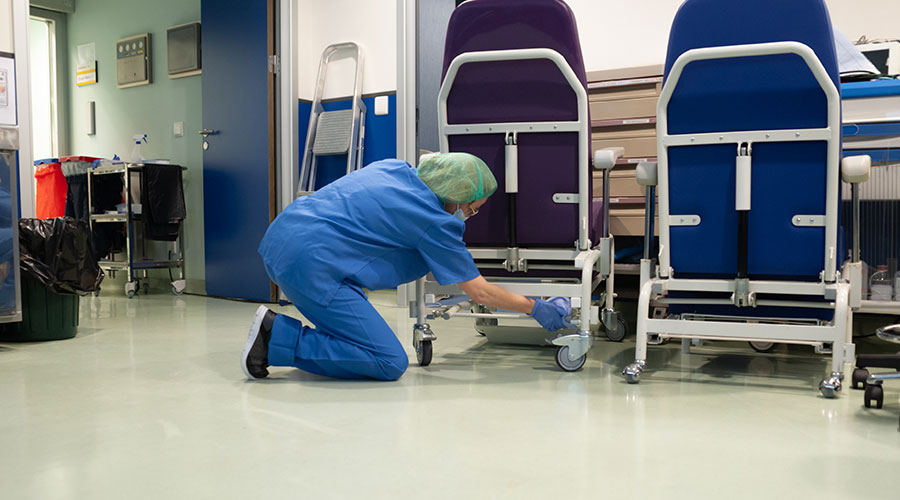Hospitals and other healthcare facilities can be stressful environments for patients, residents, visitors or staff. There are always concerns about comfort and safety. While comfort is one of the main priorities when it comes to furniture choices in these facilities, they also have to be safe for anyone that uses them. In this manufacturer roundtable, Healthcare Facilities Today talks with furniture producers on how they are making their products safer for those who use them the most.
How do furniture decisions impact worker safety? What about patient safety?
“Strenuous, non-ergonomic work environments contribute to musculoskeletal issues and higher rates of employee dissatisfaction. Providing caregiver comfort is often overlooked, but it is essential when supporting our caregiver community and ensuring their safety.
Offering a suite of products that make it seamless for caregivers to quickly pivot from one task to the next enables employees to keep their focus on the patient while maximizing their comfort. So, providing a caregiver with a moment of respite with a cart that offers a simple footrest to alter their posture for a few seconds might seem like a simple consideration, but is a welcomed bit of comfort for a worker who is unable to sit for long periods at a time.”
— Steven Bramson, president, Innovative Ergonomic Solutions, parent company of HAT Collective Healthcare
“With regard to safety, furniture decisions affect all users. Skillfully specifying appropriate furniture must be done by experienced design professionals who have a depth of understanding of user need, application and the level of daily use and abuse that may take place in a given setting.”
— Suzanne Fawley, behavioral health interior designer, Stance Healthcare
“According to research from McKinsey and Company, over 400,000 nurses left the profession in 2018, reporting burnout as the reason for their departure. Providing spaces for efficient, effective and safe work is of primary importance to nursing, as well as other professionals in the health environment. Furniture is a part of that decision process for healthcare systems – providing places for focused work, such as dictation or telemedicine; as well as team spaces for collaborative engagements with colleagues improves safety, and satisfaction, for caregivers.”
— Kimberly Montague, executive director of research and partnerships, Kimball International
Mackenna Moralez is the assistant editor with Healthcare Facilities Today

 Seeking Standards for Microbial Loads in Healthcare Facilities
Seeking Standards for Microbial Loads in Healthcare Facilities UCR Health Unveils Plans for Major Expansion
UCR Health Unveils Plans for Major Expansion High-Performance Windows Support Safety at UW Medicine's New Behavioral Health Center
High-Performance Windows Support Safety at UW Medicine's New Behavioral Health Center Central Maine Healthcare Dealing with IT System Outage
Central Maine Healthcare Dealing with IT System Outage Kaiser Permanente Opens Newly Expanded Everett Medical Center
Kaiser Permanente Opens Newly Expanded Everett Medical Center